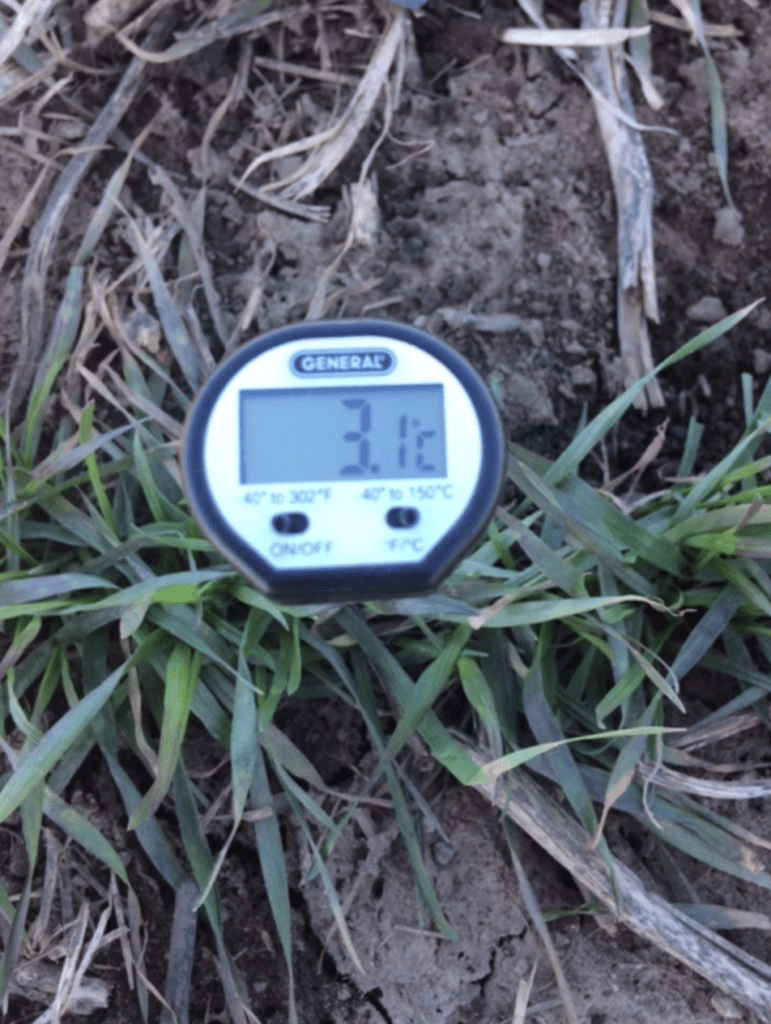DID THE WHEAT BREAK DORMANCY? – Stage One Accomplished > Ready for Stage Two!
With the recent round of warm weather, the birds were chirping, I saw some geese flying back in a northerly direction, and we lost basically every last ounce of snow. Naturally, the wheat watcher eyes turn eagerly toward the wheat field looking for the beautiful shades of deep green to brighten up the countryside from the dull brown and grey shades of winter. A couple of days with record breaking temperatures… “Did the wheat break dormancy?”
In the area I have travelled from London north, I would say “no”, well – “not completely…” Research has shown that wheat varieties individually break dormancy either by temperature triggers, or by daylight hours. And it also breaks in two stages. The temperatures and conditions did bring the wheat crop out from its deepest stage of dormancy. That does not mean that is has broke completely. That means that the wheat will be more sensitive to the next round of cold temperatures, and less resilient if we do get a cold snap that drives the soil temperature down to -9 at the crown of the wheat roots. (3/4” into the ground). Soil dryness and snow cover amounts will determine how far the cold snap will push into the soil. The wheat is in fine shape at this stage, and the weather folks are calling for “slightly above normal temps” through March. This does not feel like a threatening situation at this time. Thankfully, no reason for concern. If temps do get cold again, it will be the later planted and shallow planted wheat crops that receive the biggest set-backs.
Looks like we are going to need to wait for a few weeks longer to get to see the vibrant shades of green pop from the landscape.
The following photos were taken March 5, 2018 at 1:30pm, outside air temperature 3°C.



For more info you can review a previous episode from The Wheat School video archives below.

